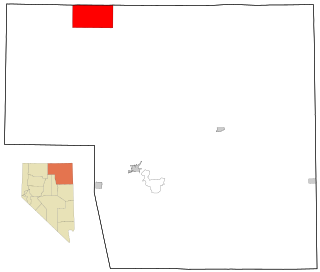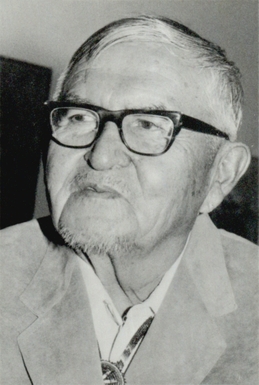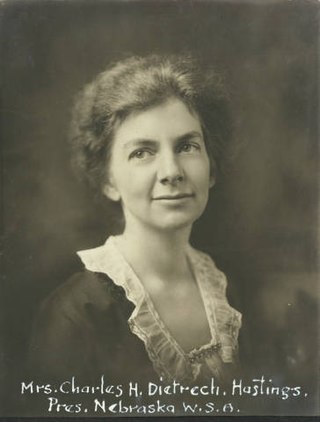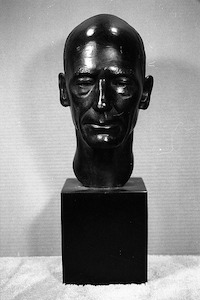Related Research Articles

Sandoval County is located in the U.S. state of New Mexico. As of the 2020 census, the population was 148,834, making it the fourth-most populous county in New Mexico. The county seat is Bernalillo.

San Miguel County is a county in the U.S. state of New Mexico. As of the 2020 census, the population was 27,201. Its county seat is Las Vegas.

Owyhee is a census-designated place (CDP) in Elko County, Nevada, United States, along the banks of the Owyhee River. The population was 953 at the 2010 census. It is part of the Elko Micropolitan Statistical Area. It is the primary town of the federally recognized Shoshone-Paiute tribe's Duck Valley Indian Reservation, which covers portions of northern Nevada and southern Idaho, and the majority of its population are Native American.

Picuris Pueblo is a historic pueblo in Taos County, New Mexico, United States. It is also a census-designated place (CDP) and a federally recognized tribe of Native American Pueblo people. The 2010 census estimated that 68 people lived in the CDP, while 267 people in the U.S. reported being of the tribal group Picuris alone and 439 reported being of the tribal group Picuris alone or in combination with other groups. Picurís Pueblo is a member of the Eight Northern Pueblos. Their own name for their pueblo is P'įwweltha, meaning "mountain warrior place" or "mountain pass place." They speak the Picuris dialect of the Northern Tiwa language, part of the Kiowa-Tanoan language family.

Santa Fe Indian School (SFIS) is a tribal boarding secondary school in Santa Fe, New Mexico. It is affiliated with the Bureau of Indian Education (BIE).

The Institute of American Indian Arts (IAIA) is a public tribal land-grant college in Santa Fe, New Mexico, United States. The college focuses on Native American art. It operates the Museum of Contemporary Native Arts (MoCNA), which is housed in the historic Santa Fe Federal Building, a landmark Pueblo Revival building listed on the National Register of Historic Places as Federal Building. The museum houses the National Collection of Contemporary Indian Art, with more than 7,000 items.

Allan Capron Houser or Haozous was a Chiricahua Apache sculptor, painter, and book illustrator born in Oklahoma. He was one of the most renowned Native American painters and Modernist sculptors of the 20th century.

Fritz William Scholder V was a Native American artist, who produced paintings, monotypes, lithographs, and sculptures. Scholder was an enrolled member of the La Jolla Band of Luiseno Indians, a federally recognized tribe of Luiseños, a California Mission tribe. Scholder's most influential works were post-modern in sensibility and somewhat Pop Art in execution as he sought to deconstruct the mythos of the American Indian. A teacher at the Institute of American Indian Arts (IAIA) in Santa Fe in the late 1960s, Scholder instructed prominent Native American students.

St. Michael's High School is a private Catholic junior/senior high school located in Santa Fe, New Mexico. It is privately run under the auspices of the international Institute of the Brothers of the Christian Schools, better known as the De La Salle Christian Brothers.

The Albuquerque–Santa Fe–Los Alamos combined statistical area is made up of eight counties in north central New Mexico. The combined statistical area consists of the Albuquerque and Santa Fe metropolitan statistical areas, and the Las Vegas, Los Alamos, and Española micropolitan statistical areas. The 2013 delineations included the Grants micropolitan statistical area, but it was removed in the 2018 revisions. As of the 2020 census, the CSA had a population of 1,162,523. Roughly 56% of New Mexico's residents live in this area. Prior to the 2013 redefinitions, the CSA consisted only of the Santa Fe metropolitan statistical area and the Española micropolitan statistical area. The total land area of the Albuquerque–Santa Fe–Las Vegas combined statistical area in the 2013 definition is 26,421 sq mi (68,430 km2).

Santa Fe is the capital of the U.S. state of New Mexico. With a population of 87,505 at the 2020 census, it is the fourth-most populous city in the state. It is also the county seat of Santa Fe County. Its metropolitan area is part of the Albuquerque–Santa Fe–Los Alamos combined statistical area, which had a population of 1,162,523 in 2020. Human settlement dates back thousands of years in the region. The city was founded in 1610 as the capital of Nuevo México, replacing previous capitals at San Juan de los Caballeros and San Gabriel de Yunque; this makes it the oldest state capital in the United States.

The School for Advanced Research (SAR), until 2007 known as the School of American Research and founded in 1907 as the School for American Archaeology (SAA), is an advanced research center located in Santa Fe, New Mexico, U.S. Since 1967, the scope of the school's activities has embraced a global perspective through programs to encourage advanced scholarship in anthropology and related social science disciplines and the humanities, and to facilitate the work of Native American scholars and artists. SAR offers residential fellowships for artists and scholars, and it publishes academic and popular non-fiction books through SAR Press.

Rowe is a census-designated place (CDP) in San Miguel County, New Mexico, United States.

Harrison Begay, also known as Haashké yah Níyá was a renowned Diné (Navajo) painter, printmaker, and illustrator. Begay specialized in watercolors, gouache, and silkscreen prints. At the time of his death in 2012, he was the last living, former student of Dorothy Dunn and Geronima C. Montoya at the Santa Fe Indian School. His work has won multiple awards and is exhibited in museums and private collections worldwide and he was among the most famous Diné artists of his generation.

Margretta Dietrich was an American suffragette and activist. She served as resident of the Nebraska Woman's Suffrage Association in 1919 and Chairman of the Nebraska State League of Women Voters in 1920. Following the ratification of the 19th amendment, she went on to advocate for the rights of Indigenous Americans in New Mexico. She was the president of the New Mexico Association of Indians Affairs for more than 20 years and helped found and was the trustee for several organizations that advocated for Native Americans.

The Bureau of Indian Education (BIE), headquartered in the Main Interior Building in Washington, D.C., and formerly known as the Office of Indian Education Programs (OIEP), is a division of the U.S. Department of the Interior under the Assistant Secretary for Indian Affairs. It is responsible for the line direction and management of all BIE education functions, including the formation of policies and procedures, the supervision of all program activities, and the approval of the expenditure of funds appropriated for BIE education functions.
Della Warrior is the first and only woman to date to serve as chairperson and chief executive officer for the Otoe-Missouria Tribe. She later served as the president of the Institute of American Indian Arts, finding a permanent home for the institution as well as helping to raise more than one hundred million dollars for the institution over 12 years. Warrior was inducted into the Oklahoma Women's Hall of Fame in 2007.
Lloyd Henri Kiva New was a pioneer of modern Native American fashion design and a cofounder and president emeritus of the Institute of American Indian Arts (IAIA) in Santa Fe, New Mexico.

Rebecca Tobey is an American artist from Santa Fe, New Mexico, who creates ceramic, brass, and patina animal sculptures in both modern and abstract styles. Along with her husband, Gene, she worked for decades to create animal forms. Her artworks, inspired by the mythologies of the Native Americans, have been commissioned by the government and private institutions, and exhibited worldwide.

Kenneth M. "Chap" Chapman (1875–1968) was an art historian, arts administrator, anthropologist, writer, teacher, and researcher of Native American art and culture in Santa Fe, New Mexico. The New Mexico Archive said of Chapman: "An advocate of Indian arts, his endeavors led to the revitalization of Pueblo pottery, the founding of the first Indian Fair and the Indian Arts Fund."
References
- ↑ "Directions". Native American Preparatory School. 2000-05-25. Archived from the original on 2000-05-25. Retrieved 2022-07-15.
The gate to the Native American Preparatory School is about 1/3 mile past the Village of South San Ysidro.
- ↑ "Admissions". Native American Preparatory School. 2000-04-08. Archived from the original on 2000-04-08. Retrieved 2022-07-15.
Director of Admissions P.O. Box 260 Rowe, New Mexico 87562
- ↑ "Home". Native American Preparatory School. 2000-05-25. Archived from the original on 2000-02-29. Retrieved 2022-07-15.
2019 Galisteo Street Santa Fe, NM 87505
- ↑ Johnson, Dirk (1990-11-04). "Indian Rootlessness". The New York Times . Retrieved 2022-07-15.
- ↑ "History". Native American Preparatory School. 1999-11-04. Archived from the original on 2000-06-04. Retrieved 2022-07-15.
- ↑ "History of School". Native American Preparatory School. 1998-12-06. Archived from the original on 1998-12-06. Retrieved 2022-07-15.
- ↑ "Native American Preparatory School" (PDF). Native American Preparatory School. 1994. p. 7 (PDF p. 10/19). Retrieved 2022-07-15. - Profile at Education Resources Information Center (ERIC) - Informational booklet
- ↑ Allison, Donald Jr. (2000-06-20). "Native-American students prospering at prep school". Elko Daily Free Press . Elko, Nevada. p. A6. - Clipping from Newspapers.com.
- 1 2 3 4 5 Brooke, James (1995-11-27). "A Bid to Redefine Indian Education". The New York Times . Retrieved 2022-07-15.
- 1 2 Boyle, Christina (2002-05-26). "Native American Preparatory School Graduates its Last Class". The Santa Fe New Mexican . p. B-1, B-4. - Clipping of first page and of second page at Newspapers.com. reprinted in Canku Ota, June 1, 2002.
- 1 2 3 4 5 6 7 8 9 Salodof, Jane (1998-11-29). "A New School Bridges Two Worlds". The New York Times . Retrieved 2022-07-15.
- 1 2 3 4 Bissley, Jackie (September 1999). "Native American Preparatory School". Cowboys & Indians . Archived from the original on January 19, 2009. Retrieved 2022-07-15.
- ↑ Oswald, Mark (2014-06-17). "Pecos River ranch center, formerly Native American Prep, up for auction in Santa Fe". Albuquerque Journal . Retrieved 2022-07-15.
- 1 2 "DA 01-193". Federal Communications Commission. 2001-01-26. Retrieved 2022-07-15.
NAPS is not located in Rowe and it is not designed to serve the educational needs of the residents of Rowe. Instead, according to the information provided by the petitioner and staff research, NAPS, which has a Rowe post office box for some of its correspondence, is an independent residential school whose mission is to provide a college preparatory education to Native Americans and whose student body is comprised of children not from Rowe but from all over the United States.
- ↑ "School Life". Native American Preparatory School. 2000-04-08. Archived from the original on 2000-04-08. Retrieved 2022-07-15.
- ↑ Matthew Reichbach, Adam Kokesh launches northern New Mexico congressional campaign Archived July 1, 2011, at the Wayback Machine , American Independent News Network, July 6, 2009.